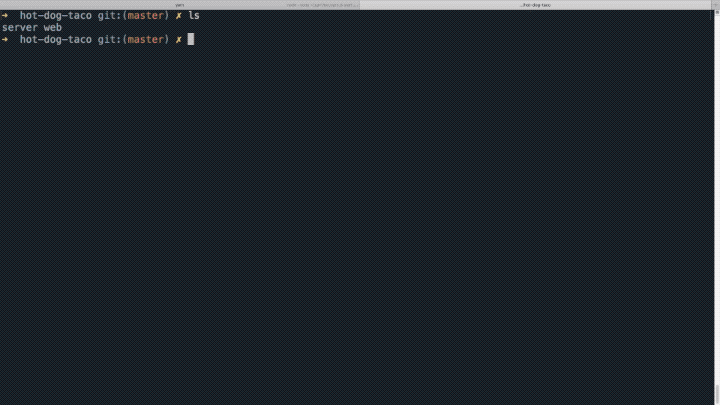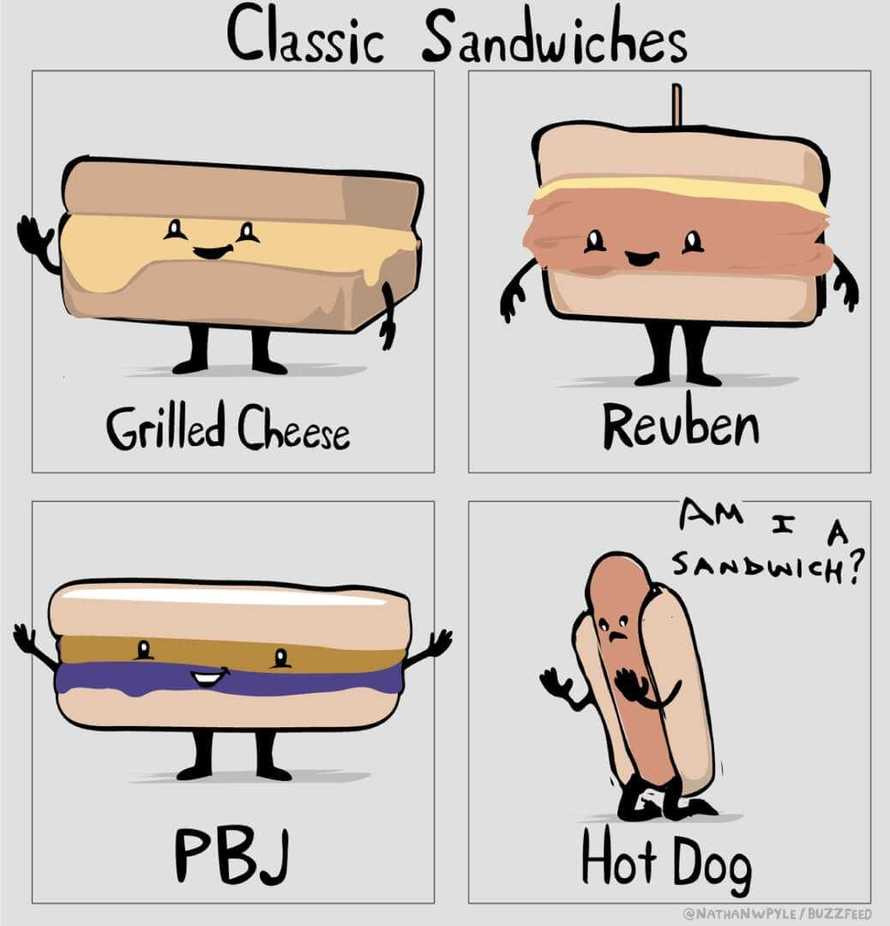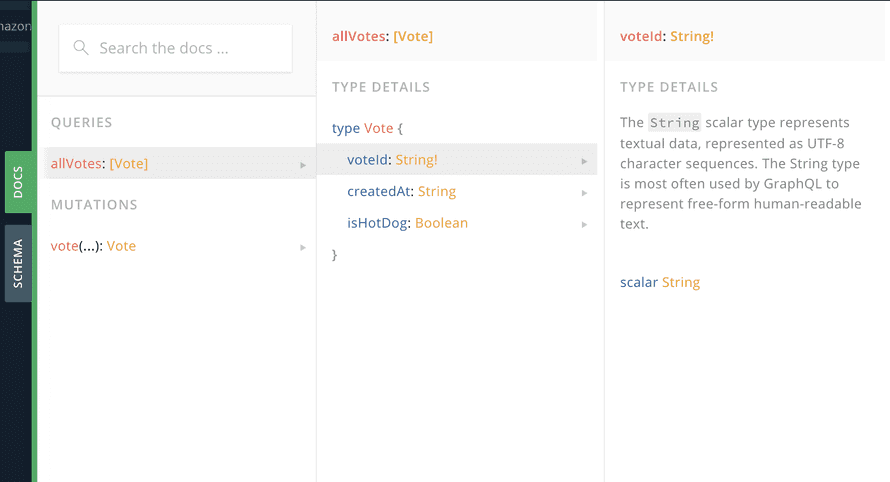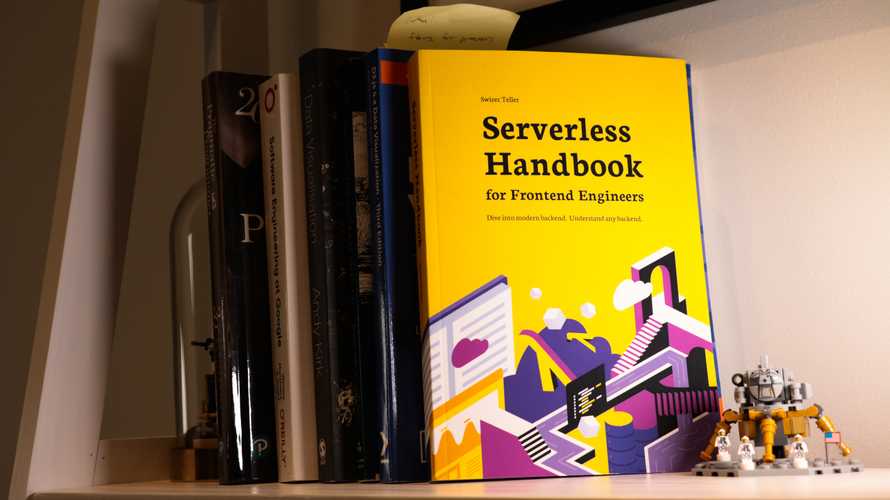What if I told you modern tools let you build and launch a small webapp in 30 minutes? Complete with SSL, a .com domain, a database, a documented API, CDN hosting, fast static initial loads, and a hydrated SPA?
That's the challenge I posed at Silicon Valley Code Camp this weekend. The audience didn't believe me, so it was time to perform some magic. 🧙

Here's the app 👉 ishotdogtaco.com
And the code 👉 Swizec/hot-dog-taco
Like all magicians, I cheated on stage. Had some code snippets prepared, knew what I was building, and how. Like Penn & Teller once said:
Sometimes, magic is just someone spending more time on something than anyone else might reasonably expect.
The real build, from scratch, while figuring it out ... that takes 70min.
Serverless Handbook for Frontend Engineers – free chapter
Dive modern backend. Understand any backend.
Serverless Handbook taught me high-leveled topics. I don't like recipe courses and these chapters helped me to feel like I'm not a total noob anymore.
The hand-drawn diagrams and high-leveled descriptions gave me the feeling that I don't have any critical "knowledge gaps" anymore.
~ Marek C, engineer
Start with a free chapter and email crash course ❤️
But how?
About to do a magic trick on stage 👉 build and deploy an app with a backend, database, real .com domain, SSL, and all the good stufg pic.twitter.com/4sXKr4gPIo
— Swizec Teller (@Swizec) October 19, 2019
It's all about the stack. A new paradigm for building webapps that's emerging.
You build the application logic, platforms take care of the rest. Focus on the part that makes your idea special.
Your app comes in two parts:
- server for sharing and persisting data between clients, heavy slow operations, data analysis, etc.
- web/mobile for user-facing UI, single user logic, etc.
You use serverless technologies to host your server. A few lines of configuration, some javascript code, and you're ready to accept requests. Plus it's scalable.
No need to deal with Kubernetes and Dockers and setting up your own DNS configs and dev environments and whatnot. It's pretty neat.
For the frontend, you use the JAMstack. Loosely. Create a single page app, use Gatsby or Next to get fast static initial loads, talk to your backend via API – a GraphQL API.
Since your frontend and backend are decoupled, you can host them separately. Let serverless deal with just your API and data, host everything else as a static page on a CDN.
Your app is live, fast, and scales well.

The server side
I encourage you to look at github for the full code. Here's a couple interesting bits.
Hot Dog Taco is a small app so the backend is simple: A graphql server that handles one API endpoint serving all queries.
Bigger graphql servers still have just a single API, but their type definitions and query resolvers are bigger :)
// server/src/handler.ts
const typeDefs = gql`
type Vote {
voteId: String!
createdAt: String
isHotDog: Boolean
}
type Query {
allVotes: [Vote]
}
type Mutation {
vote(isHotDog: Boolean): Vote
}
`;
const resolvers = {
Query: {
allVotes: async () => {
const result = await scanItems({});
return result.Items;
}
},
Mutation: {
vote: async (_: any, { isHotDog }: { isHotDog: boolean }) => {
const voteId = uuidv4();
const createdAt = new Date().toISOString();
const result = await updateItem({
Key: { voteId },
UpdateExpression:
"SET createdAt = :createdAt, isHotDog = :isHotDog",
ExpressionAttributeValues: {
":createdAt": createdAt,
":isHotDog": isHotDog
},
ReturnValues: "ALL_NEW"
});
return result.Attributes;
}
}
};
const server = new ApolloServer({
typeDefs,
resolvers
});
export const graphql = server.createHandler({
cors: {
origin: "*",
credentials: true
}
});
Those 56 or so lines are all it took. Apollo GraphQL libraries do most of the heavy lifting.
We write a type definition for our GraphQL schema – the types, queries, and mutations – and a bunch of resolvers that say "When this query comes in, run this function to get or save data to the database"
The database is DynamoDB because that's quickest to set up.
Oh and I promised a documented API. Apollo takes care of that when you open the GraphQL playground.

The web side
The web side is a bunch of React components using Apollo hooks to run queries and fetch data. No central authority, no setup for global state, just components getting what they need when they need.
You can see the webapp code on github
Apollo caching takes care of speed and performance behind the scenes, I think. Haven't dug into that very deep yet to be honest.
Here's how the webapp works:
// web/src/pages/index.js
const VOTE_MUTATION = gql`
mutation vote($isHotDog: Boolean!) {
vote(isHotDog: $isHotDog) {
voteId
createdAt
}
}
`
const GET_VOTES_QUERY = gql`
query allVotes {
allVotes {
voteId
isHotDog
}
}
`
const VoteButton = ({ isHotDog, children }) => {
const [vote, { loading }] = useMutation(VOTE_MUTATION, {
variables: {
isHotDog,
},
})
return loading ? "Voting ..." : <button onClick={vote}>{children}</button>
}
const Votes = () => {
const { loading, error, data } = useQuery(GET_VOTES_QUERY)
const yes = data && data.allVotes.filter(vote => vote.isHotDog).length,
no = data && data.allVotes.filter(vote => !vote.isHotDog).length
return loading ? (
<p>Loading votes ...</p>
) : (
<strong>
{yes + no} votes, {Math.round((yes / (yes + no)) * 100)} say hot dog is
taco
</strong>
)
}
const IndexPage = () => (
<Layout>
<SEO title="Home" />
<h1>Is hot dog taco?</h1>
<p>
<VoteButton isHotDog={true}>Yes </VoteButton>
<VoteButton isHotDog={false}>No </VoteButton>
</p>
<div style={{ maxWidth: `600px`, marginBottom: `1.45rem` }}>
<Image />
</div>
<Votes />
</Layout>
)
We've got a couple of GraphQL queries defined as constants, and two important React components:
<VoteButton>is a button that votes Yes or No when clicked. Runs a GraphQL mutation and waits for a response.<Votes>pokes our GraphQL API with a query and returns the results. This is where we see whether a hot dog is a taco.
Notice how each component handles its own API communication internally? No need to bother the whole app with global state and other weird complications.
It's like edge computing but for React components 🤔
The rest is Gatsby machinery handling all the hard stuff. Compiles to a static build at deploy, gives us routing, basic page layout, even a little bit of CSS defaults.
Host it with Netlify or Zeit and voila: A live webapp with SSL and fast CDN setup.
But why?

Because the Cube Rule is an amazing unified theory of food identification.
But also to show that it can be done.
You can launch an app with little effort these days. The web stack has never been so productive and I'm excited as heck to see what happens next.
I'm expecting a cambrian explosion of indie startups. Small apps solving real problems, making their creators rich.
You excited?
Cheers, ~Swizec
Continue reading about Is hot dog taco?
Semantically similar articles hand-picked by GPT-4
- It's never been this easy to build a webapp
- How serverless beats servers
- 5 apps with the modern web stack
- Your first NextJS app – CodeWithSwiz
- Why serverless fits side-projects perfectly
Want to dive into serverless? Not sure where to begin?
Serverless Handbook was designed for people like you getting into backend programming.
360 pages, 19 chapters, 6 full projects, hand-drawn diagrams, beautiful chapter art, best-looking cover in tech. ✌️

Learn how to choose the right database, write cloud functions, think about scalability, gain the architecture mindsets for robust systems, and more.
Leave your email to start with a free chapter and email crash course 👇
Serverless Handbook for Frontend Engineers – free chapter
Dive modern backend. Understand any backend.
Serverless Handbook taught me high-leveled topics. I don't like recipe courses and these chapters helped me to feel like I'm not a total noob anymore.
The hand-drawn diagrams and high-leveled descriptions gave me the feeling that I don't have any critical "knowledge gaps" anymore.
~ Marek C, engineer
Start with a free chapter and email crash course ❤️
Have a burning question that you think I can answer? Hit me up on twitter and I'll do my best.
Who am I and who do I help? I'm Swizec Teller and I turn coders into engineers with "Raw and honest from the heart!" writing. No bullshit. Real insights into the career and skills of a modern software engineer.
Want to become a true senior engineer? Take ownership, have autonomy, and be a force multiplier on your team. The Senior Engineer Mindset ebook can help 👉 swizec.com/senior-mindset. These are the shifts in mindset that unlocked my career.
Curious about Serverless and the modern backend? Check out Serverless Handbook, for frontend engineers 👉 ServerlessHandbook.dev
Want to Stop copy pasting D3 examples and create data visualizations of your own? Learn how to build scalable dataviz React components your whole team can understand with React for Data Visualization
Want to get my best emails on JavaScript, React, Serverless, Fullstack Web, or Indie Hacking? Check out swizec.com/collections
Did someone amazing share this letter with you? Wonderful! You can sign up for my weekly letters for software engineers on their path to greatness, here: swizec.com/blog
Want to brush up on your modern JavaScript syntax? Check out my interactive cheatsheet: es6cheatsheet.com
By the way, just in case no one has told you it yet today: I love and appreciate you for who you are ❤️
